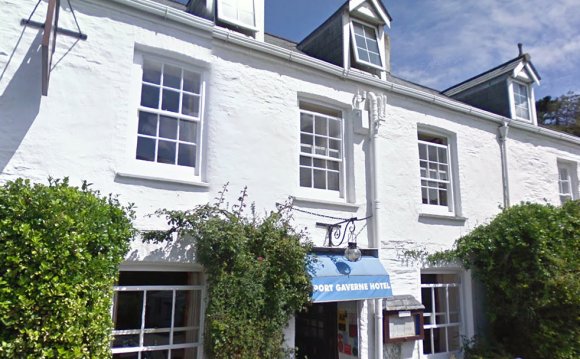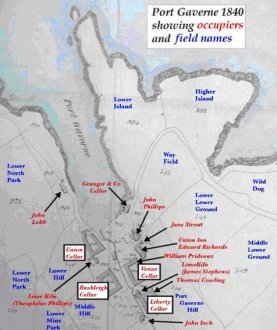
 The present tranquillity of Port Gaverne belies the bustle of bygone centuries, for in structures and structures all round stand the evidence of an industrious past. A lot of Cornwall’s commercial activities have now been represented right here, the neighborhood individuals making use of the sources of land and water: fish, slate, and ... tourists!
The present tranquillity of Port Gaverne belies the bustle of bygone centuries, for in structures and structures all round stand the evidence of an industrious past. A lot of Cornwall’s commercial activities have now been represented right here, the neighborhood individuals making use of the sources of land and water: fish, slate, and ... tourists!
There has never already been most of a resident population. 160 years back there were just 35 folks living here; presently there are also less. Port Gaverne ended up being constantly a spot of benefit the residents of Port Isaac, specially the womenfolk. Using the ebb and circulation of manufacturing activity over time, we seen adaptation in place of wholesale rebuilding, so the hamlet we see today has remained practically unchanged for pretty much 200 many years.
Port Gaverne 1840
Originally labeled as ‘Port Kerne’ or ‘Karn Hun’, small reference are found ahead of the 19th century. John Norden, writing in 1584, stated “Port-kerne, a litle cove for fisher-boates; and ther had been somtymes a crane to lifte up-and downe suche comodities as had been ther consumed to-be transported, or browght in and unloden: and ther have bene divers buyldinges, now all decayde considering that the developing of Portissick.”. From his feedback, we are able to infer that Port Gaverne was much more prominent than Port Isaac in previous many years. There clearly was a pier built-in Port Isaac in Tudor times, which might have triggered our fisherfolk to move up to the more protected cove.
In 1762 we find an earlier mention of industry, with a lease on a parcel for loading sand. Lime-rich sea-sand had been once a very important commodity, used as a fertiliser on acid Cornish soils. The early fortunes associated with the Bude Canal while the Bodmin and Wadebridge Railway had been both created from the demand for this commodity. In Port Gaverne, it was a prime income source toward residents. Sir John Maclean, composing in 1872, mentions that by looking the sand at reasonable tides and putting it above high-water when it comes to farmers to get the local ladies and kids could earn around their seafaring men-folk. By Maclean’s time, the usage sea sand was at drop, even though it ended up being nonetheless becoming dug here really to the current century.
Carting sea-sand through the coastline c1900 Note the sand lots on coastline
1802 saw initial interest associated with Guy household in Port Gaverne whenever Warwick man leased out land to construct the first seafood basement or ‘pilchard palace’ into the cove. Four years of the Guy household dominated Port Gaverne: Warwick Guy, which died in 1819; his child Mark, who died in 1851; Warwick Richard man (1821-1905); and lastly Mark Guy, whom passed away in 1918. After that first fish cellar, another three shortly accompanied, offering united states those large U-shaped buildings nevertheless within Port Gaverne.
 Warwick Guy and also the record boats c1875 Note kiddies by his foot peering within camera
Warwick Guy and also the record boats c1875 Note kiddies by his foot peering within camera
Along with their romantic brands, ‘Venus’, ‘Liberty’, ‘Rashleigh’ and ‘Union’, the four cellars were working flat out because first quarter of the nineteenth century. Although the main fishing period lasted no more than eight weeks in the late summertime, the volumes arrived were prodigious. In 1811, when pilchards became scarce, two regarding the cellars between them processed around 250 a great deal of fish in a single week. By 1815, once the shoals had returned in vast quantities, a cellar in neighbouring Port Isaac managed over 300 tons in one few days. This implies that the Port Gaverne cellars may have taken care of around 1, 000 tons per week. In 1811, pilchards offered for £40 quite a bit, as well as using discounted of £22 in 1815, the return in the Guy’s investment must have been colossal.
Seine Fishing in Port Isaac Bay 1835
The riches associated with the water had been exhaustible, and also by the late 1820s the shoals were in really serious decrease, not to come back to those record levels. For man family, who's got invested sensibly, enough time had come to check out delivery therefore the record trade to safeguard their income and continue maintaining neighborhood employment.
The start of the Delabole Slate path c1875
The Delabole Slate Quarry, five kilometers inland, was indeed in production since Elizabethan times. In 1807, the record company quarried from existing roadway down to Port Gaverne enabling access to simple water transport to areas home and overseas. An endeavor to prevent the final high descent and present simpler running was built in 1860 by cutting a dogleg track throughout the ‘Main’, terminating in a newly-built quay. This is perhaps not a success, since a ship moored into the quay would be seriously damaged in a swell. It was quickly abandoned. The track and quay today make a well-graded road on the cliffs.
Loading Slate at Port Gaverne c1875
Around 100 vessels a-year emerged right here to service the slate trade. Capable of carrying fifty to eighty tons, these people were flat-bottomed and able to settle upright regarding the sand. Hefty mooring ropes were linked with articles set into the stones on either region of the coastline. A number of the granite articles can certainly still be viewed, and the deep circular rock swimming pools tell of the location regarding the wooden ones. The slates were loaded by women who passed them aboard yourself and stuffed all of them in straw. As the females were working, their children would play at mind for the beach, being cared for because of the older ones.
Many of the vessels belonged into man family. Warwick Richard had six when you look at the 1860s, and lots of of those were integrated Port Gaverne. One local ship, the ‘Surprise’, had been reputedly offered her title after Mr man had heard of size of the shipwright’s bill! Shipping is a two-way traffic, as well as on the inward voyage coal would be brought from Wales and basic merchandise from Plymouth. Limestone was also essential for the limekiln, the keeps which are nevertheless indeed there. This is operate by Theophilus Phillips, whom offered whitewash the cottages and lime the nearby areas.
In 1890s the railway came to Delabole, after that even closer, to Port Isaac Road section, a few miles inland. At a swing this killed off Port Gaverne’s slate exports and coastal trade, but laid the foundation for a brand new industry - tourism.
Share this article
More about Port Isaac (Cornwall)



